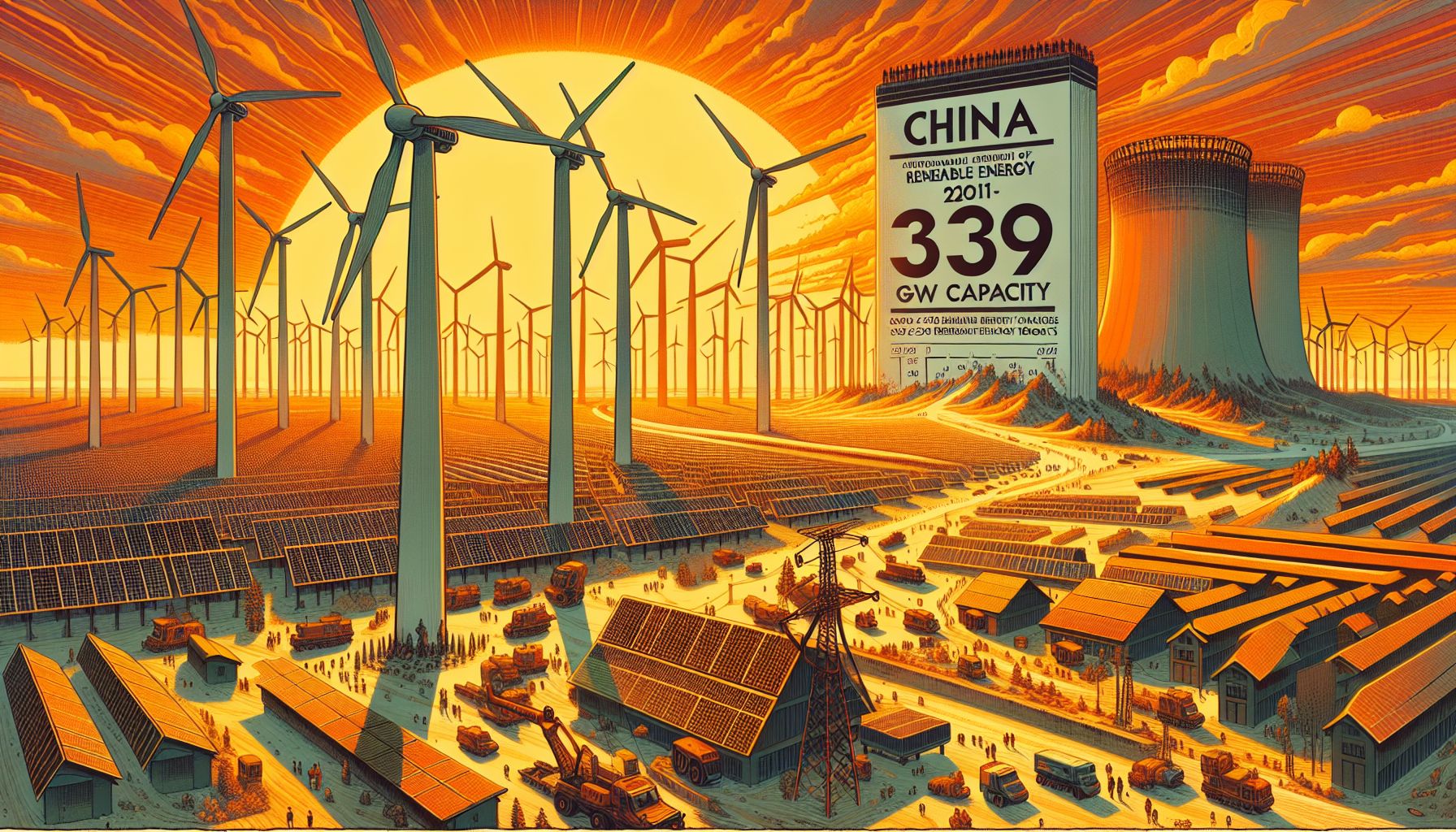China's Renewable Energy Surge: Doubling World's Solar and Wind Capacity

China, Thursday, 11 July 2024.
China is constructing 339 GW of wind and solar power, nearly twice the global total. This rapid expansion puts China on track to meet its 2030 renewable energy targets six years early, potentially marking 2023 as the peak year for its CO2 emissions.
Scale of China’s Renewable Projects
China’s renewable energy projects are unparalleled, with 339 gigawatts (GW) of solar and wind power currently under construction. This includes 180 GW of solar power and 159 GW of wind power, representing nearly twice the capacity being built in the rest of the world combined[1][2][3]. The sheer scale of these projects underscores China’s commitment to transitioning from fossil fuels to renewable energy sources, significantly reducing its carbon footprint.
Meeting Targets Ahead of Schedule
China’s progress in renewable energy is not just ambitious but also timely. The country is on pace to achieve its target of 1,200 GW of installed wind and solar power by the end of 2024, six years ahead of its original 2030 goal[2][4]. This accelerated timeline suggests that China is not only committed to its renewable energy goals but is also capable of executing large-scale projects efficiently and effectively.
Global Impact and Comparisons
Internationally, China’s renewable energy efforts dwarf those of other nations. For instance, the United States, which trails far behind, has only 40 GW of wind and solar capacity under construction. Other countries such as Brazil, the United Kingdom, and Spain have even smaller capacities[1]. This disparity highlights China’s dominant position in the global renewable energy sector and raises questions about why other nations are not keeping pace.
Challenges and Future Outlook
Despite its rapid advancements, China faces significant challenges in integrating its new renewable capacity into a grid still heavily reliant on coal. Improved storage solutions and grid flexibility are essential to utilize the increasing volume of clean energy efficiently. In 2023, China invested $11 billion in grid-connected batteries, marking a 364% increase from the previous year[2][5]. These investments are crucial for ensuring that the renewable energy produced can be stored and distributed effectively.
Environmental and Economic Implications
The environmental benefits of China’s renewable energy expansion are significant. In May 2023, China saw a record-low 53% of its electricity generated from coal, with 44% coming from non-fossil fuel sources[3][6]. This shift has already led to a 3.6% reduction in carbon dioxide emissions from the power sector. Economically, the surge in renewable energy projects is expected to create numerous jobs and stimulate technological innovation, further solidifying China’s leadership in the global green energy market.

